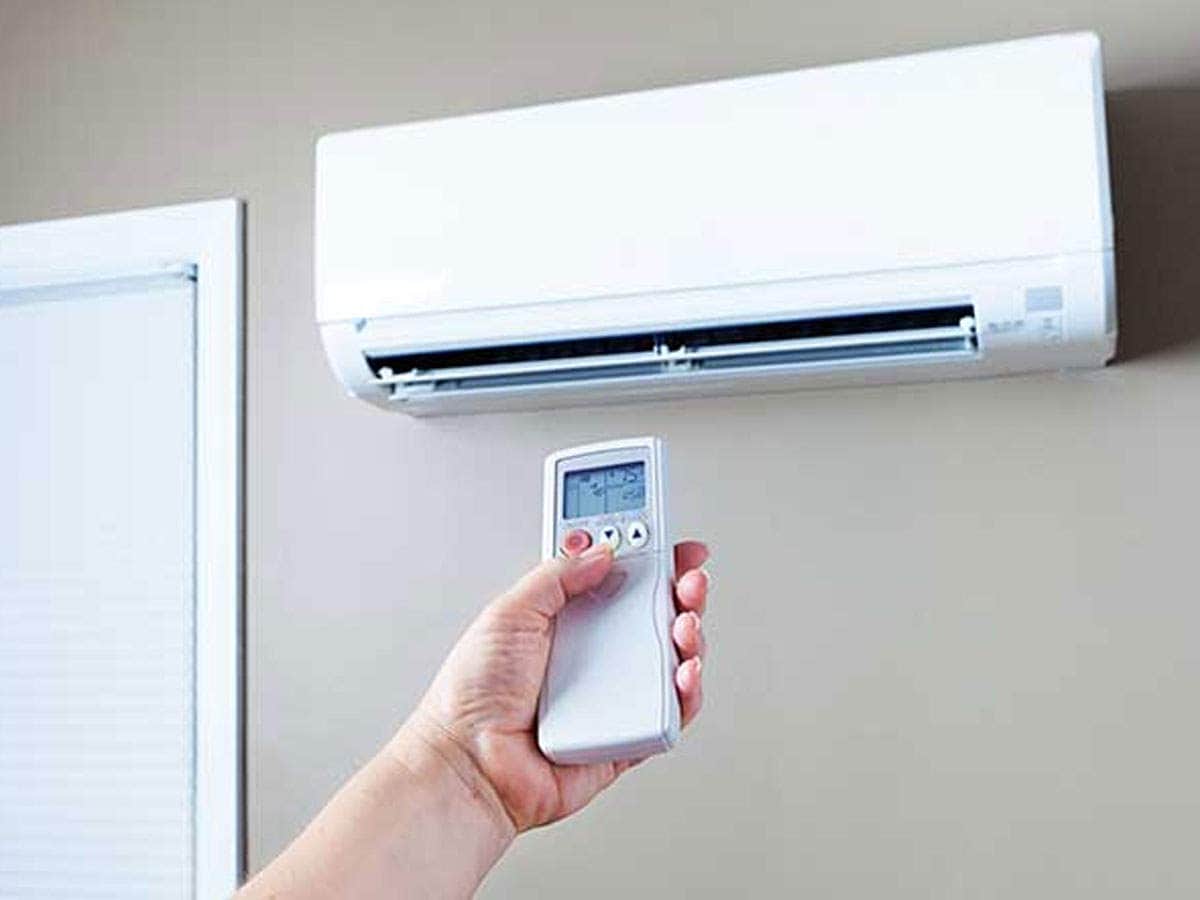The Environmental Impact of Air Conditioning in Tearooms
Air conditioning is an important technology used in many tearooms. It is defined as a process of controlling the environment in a given space by cooling or heating it, or by changing its humidity levels for the purpose of maintaining a certain temperature range and other comfort conditions suitable for human occupation. Air conditioning systems are either active (using energy to power the system) or passive (not using energy, instead utilizing naturally occurring processes).
In the context of tearooms, air conditioning is typically used to cool the indoor air and add humidity during hot summer days. It can also be helpful in eliminating airborne particles that may make customers feel uncomfortable. However, the use of air conditioning can have both positive and negative environmental impacts. This article will discuss some of these impacts and provide information on ways to reduce them when using air conditioning systems in tearooms:
- Positive impacts
- Negative impacts
- Ways to reduce environmental impacts
Overview of tearooms
Tearooms are establishments that offer refreshments and food for people in the form of light snacks, teas, beers, coffees and other drinks. Increasingly, tearooms have adopted the use of air conditioning systems to both maintain a consistent temperature and to reduce the volume of people’s conversations. This makes them optimal spaces for relaxation or even work.
It is easy to forget about the environmental impact that comes with an air conditioning system in a tearoom, as these items are commonplace due to their low cost and quick setup times. While many modern tearooms now make provision for environmental considerations by making use of energy efficient systems, they impose demands on natural resources such as electricity – leading to increased emissions into our atmosphere. This can be especially acute when multiple air conditioners are used in the same space at once; meaning not only more electricity is consumed but cooling emissions will inevitably increase in tandem.
Environmental Impact
The environmental impact of air conditioning in tearooms is an important concern. Air conditioning systems use a lot of energy and can contribute to pollution and global warming. Additionally, improper maintenance or installation of air conditioners can lead to inefficient use of energy and can therefore have serious implications for the environment.
In this article, we will explore the environmental impact of air conditioning in tearooms and discuss the potential solutions.
Increase in electricity consumption
Since air conditioning units are designed to cool down a room or environment, they increase the electricity consumption of tearooms. This can have a significant effect on the environment since electricity, typically generated by burning fossil fuels, is one of the major sources of greenhouse gas emissions.
To reduce the environmental impact of air conditioning in tearooms, owners and managers should consider alternative cooling options such as evaporative cooling systems. This type of system uses ambient temperature water to cool down rooms and does not require a lot of energy compared to regular air conditioning units. Additionally, other sustainable cooling technologies such as solar-powered thermal cooling can be used for specialized applications such as providing refrigeration for food storage.
Moreover, owners should look at ways to reduce the demand for air conditioning in their space. For instance:
- Strategically positioning fans and ventilation systems around the room can lower temperatures without running ACs all day long.
- Opening windows during cooler parts of the day will help reduce energy consumption associated with air conditioning.
- Installing energy-efficient AC units in tearooms is an important step towards ensuring that these spaces are comfortable while minimizing their environmental footprint.
Release of harmful gases
The extent of the environmental impact of air conditioning in tearooms varies and depends on several factors. Primarily, air conditioners use a refrigerant gas to transfer heat to the cooler, which is then released outside. Many of these gases are harmful greenhouse gases and can add to climate change and global warming effects. Commonly used refrigerant gases such as hydrofluorocarbons (HFCs) can pose a serious threat, if not disposed of properly. HFCs are thousands of times more powerful than carbon dioxides and can remain in the atmosphere for up to several years before they break down.
Installing an energy-efficient air conditioning system with a low Global Warming Potential (GWP) rating helps reduce energy consumption and also keeps hold on HFC gas release, thereby reducing its environmental impact. Similarly, recyclable refrigerant materials can be employed for recycling the use after disposal at tearooms in order to reduce their emissions further. Air filters should also be replaced regularly due to their lower efficiency over time which results in higher consumption of electricity.
Impact on global warming
Air conditioning is one of the primary contributors to global warming, as it requires a great deal of energy to power the machines. The burning of fossil fuels—such as coal, natural gas, and oil—to generate electricity emits greenhouse gases into the atmosphere. According to the United States Environmental Protection Agency (EPA), energy consumption for air conditioning accounts for up to 8% of all US greenhouse gas emissions.
In addition to global warming, air conditioning also brings about further consequences—water pollution from leaking coolants and noise pollutions from loud compressors. Air conditioners also produce ozone-depleting substances such as HCFCs (hydrochlorofluorocarbons). This contributes to the depletion of Earth’s protective ozone layer, allowing more ultraviolet radiation from sunlight through which in turn accelerates global warming.
All in all, if tearooms do not opt for any form of green solution like those mentioned in previous sections with regards to how they go about their cooling needs, then using traditional air conditioners could have a huge impact on the environment and our planet’s future should be weighed carefully before an installation takes place.
Solutions
Air conditioning can have a large environmental impact and is usually an unnecessary expense in tearooms. However, implementing solutions that reduce the need for air conditioning can be difficult. There are many environmentally friendly and cost effective options available, so let’s look at what they are and how they can benefit tearooms.
Use of energy efficient air conditioners
One of the most effective ways of reducing the environmental impact from using air conditioning in tearooms is by using energy-efficient air conditioners. As such, many modern-day models come equipped with advanced features that increase their efficiency and reduce their emissions. This includes improved timers for setting on and off times, higher insulation values, variable speed compressors, more efficient fans and heat exchangers, as well as improved temperature sensors and controls. All of these features work towards reducing energy consumption when compared to traditional air conditioners.
Additionally, certain types of air conditioners can take advantage of free-cooling systems which allow them to use outside ventilation to provide cooling during certain periods instead of relying entirely on mechanical refrigeration. This drastically cuts down on energy usage while still providing adequate cooling in the room if used appropriately.
Furthermore, careful consideration must be taken when selecting the right kind of air conditioning system for a particular space; this ensures that it is well-suited to the needs at hand and has adequate insulation properties for its intended environment. By doing so, it can be much more effective in terms use energy efficiency than opting for an off-the-shelf model which may not have all the necessary capabilities or tuned correctly for optimal performance.
Utilization of natural ventilation
Effective natural ventilation can be incorporated into tearooms, at minimal or no cost, to improve cooling and air quality while transitioning away from air conditioning that is powered by fossil fuels. Natural ventilation in a tearoom includes cross-ventilation via open windows, or louvers. This type of ventilation uses the indoor-outdoor temperature gradients and wind speed to efficiently cool the tearoom. Additionally, strategically planned air intakes can also draw in clean air from outdoors into the room.
Natural ventilation is an easy solution to alleviate stress on HVA/C systems which require much energy input for cooling – this further reduces overall carbon emissions from a business. Strategies include:
- Adequate roof overhangs
- Operable windows that open wide for maximum airflow
- Larger openings for variables such as bathrooms and storage rooms
- Considering prevailing winds in order to reduce strain on building components and ensure maximum comfort for guests.
Finally, shade trees are highly effective when planted around outdoor seating areas in order to reduce heat levels near buildings – this further reduces the need for air conditioning within surrounding rooms/seats of the tearoom within the interior space of the building itself.
Installation of solar air conditioners
Using solar air conditioning units is a great way to reduce the environmental impact of air conditioning in tearooms and other commercial buildings. Solar air conditioners are designed to utilize solar radiation for cooling, as opposed to traditional air conditioners which rely on electricity from the grid. This is achieved by using a combination of solar PV panels, coolant circulation and cooling media. When installing a solar AC unit, it is important to consider factors such as average daily sunlight hours, the size of the building, seasonal weather conditions and budget availability.
Benefits of installing a solar AC unit include:
- reduced energy consumption due to lower power consumption compared with traditional AC units;
- improved comfort due to higher efficiency in both cooling and dehumidification;
- an environmentally friendly solution that utilizes free energy from the sun;
- increased savings due to reduced electricity bills; and
- greater independence from utility companies.
Installing a solar-powered AC unit can also enable businesses or homes equipped with the technology to tap into roof spaces or nearby structures for additional energy production – offsetting even more their reliance on expensive grid energy.
Solar air conditioning solutions require careful consideration and customization according to individual needs; however, it can be one of the most cost-effective ways for businesses and individuals alike looking for greener cooling solutions that minimize their environmental footprint.
Conclusion
In conclusion, air conditioning has a significant environmental impact in tearooms. It increases the demand for electricity, emits more carbon dioxide, and can cause an unhealthy indoor environment. Although air conditioning provides temporary relief from extreme heat, it is necessary to consider and reduce the environmental impact of its usage.
Summary of environmental impact of air conditioning in tearooms
Air conditioning use in tearooms can have a significant effect on the environment. Air conditioning units are major consumers of energy and contribute to global warming through the emission of greenhouse gases. Additionally, many air conditioners use ozone-depleting refrigerants that can be harmful to the atmosphere and stratospheric ozone layer. If a tearoom’s air-conditioning unit is older than 10 years or uses Freon or HCFC-22 (hydrochlorofluorocarbons) refrigerants, it’s likely contributing substantial amounts of emissions into the atmosphere.
To reduce their environmental impact, owners of restaurants and other food service establishments should opt for air conditioning units that utilize carbon dioxide as its primary refrigerant, as this has nearly zero Ozone Depletion Potential (ODP). Cleaner refrigerants such as hydrofluoroolefins (HFOs) may also be used – these have lower Global Warming Potential ratings than traditional HFCs, meaning they may still emit some greenhouse gases but at a lower rate. Finally, restaurateurs should install Energy Star rated wall-mounted cooling systems wherever possible – these consume less energy and last longer than traditional units.
Recommendations for reducing the environmental impact
Air conditioning in tearooms has a significant environmental impact. By ensuring appropriate ventilation practices and using efficient HVAC systems, tearooms can reduce the environmental impact of air conditioning while also maintaining occupant comfort levels.
To minimize energy usage and air conditioning-related emissions, tearooms may wish to consider implementing the following measures:
- Put in place controls to enable staff to adjust temperature and airflow settings when there are variations in occupancy or weather conditions.
- Consider use of climate controls such as night setback feature and remote sensing, which can be adjusted uniformly throughout the establishment or tailored to specific areas.
- Incorporate natural ventilation wherever possible by providing operable windows or ventilators as part of the overall building design. This will allow occupants to adjust their own comfort by opening/closing windows, drawing curtains/blinds etc.
- When selecting an HVAC system for a new tearoom, select appropriately sized options with high Seasonal Energy Efficiency Ratio (SEER) ratings that provide cooling with low operating costs.
- Install energy efficient fan motors with variable speed drives and duct dampers that modify airflow when it is not necessary to provide cooling throughout an entire space.
- To reduce electricity consumption from HVAC systems while still providing efficient air conditioning, utilize technologies such as absorption chillers powered by alternate sources of energy such as solar panels or cogeneration systems.
By implementing some of these recommendations, tearooms can significantly reduce the environmental impact associated with their air conditioning systems while still providing comfortable conditions for customers and staff alike.




